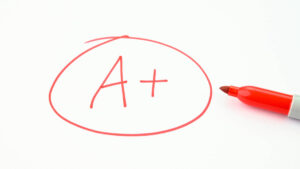Who’s on the road towards near-term lithium brine production in the Americas?

Here are the companies who are on poised to start lithium production from brines in the near-term. Pic: via Getty Images
We humans tend to be drawn to the new and shiny, which goes some way toward explaining why direct lithium extraction has captured the hearts and minds of investors who are keen to get in on the ground floor.
But DLE, which describes multiple innovative techniques that seek to extract lithium from salty brines without the use of evaporation ponds, has yet to be proven commercially and while there is great interest in its use in North America – with its more stringent mining regulations, it remains a curiosity in South America.
Rather, it is good old evaporation ponds – commonly called salars – that are still very much the go to for lithium brine development in the “lithium triangle” of Bolivia, Argentina and Chile.
After all, building a big-lined pond, which will be filled with lithium-rich brines, is not only simple, but also cost effective as it relies on natural evaporation – aided by sunlight and dry air of the Andean highlands.
Processing the resulting crystallised lithium salts is also easy compared to the hard rock (spodumene) deposits found in Australia and Canada.
That’s not to say that DLE won’t find its way southwards – indeed there are already companies looking to use the technique in some way or another.
Catching the next lithium wave
Regardless of whether evaporation ponds or DLE are used though, lithium brine plays are undoubtedly trying to get their projects moving as quickly as possible in order to catch the next lithium wave.
Lithium prices have stumbled in recent months – despite an uptick in July – due to signs of low demand for key battery manufacturers as well as the concerning macroeconomic in China that translated to lower consumer spending, but current pricing remains historically high.
And while Goldman Sachs has forecast that prices will keep falling until 2025, it also expects prices to recover in 2026.
If the investment bank is to be believed, it behoves ASX players that are still in the exploration and development stages to position themselves to take advantage of this uptick.
Galan Lithium (ASX:GLN) is perfectly positioned to ride this wave having just started construction of Phase 1 of its four phase Hombre Muerto West development in Argentina, after securing key construction approvals in early August 2023.
Construction of the first evaporation pond, one of several across the 110ha Phase 1 project area, is expected to be completed in the first quarter of 2024 while first production of a premium 6% lithium chloride concentrate is expected in the first half of 2025.
Phase 1 seeks to produce the lithium concentrate at a rate of about 5,400tpa of lithium carbonate equivalent.
Optimisation work is ongoing and will culminate in the release of the Phase 2 DFS in September this year to address a 20,000tpa production rate.
Final output from both HMW and Candelas is expected to hit 60,000tpa at the culmination of the four-phase development.
Speaking to Stockhead, managing director Juan Pablo Vargas de la Vega noted that the company is reasonably confident of the company’s ability to secure funding for the Phase 1 development as it has a small capex relative to other projects.
“We are looking at about $100m and we already have some money in the bank, so it is not like we need to fund huge amounts of capex,” he noted.
“We have got the construction permits and we are going to be a producer. Within 18 months we should be in cash flow.”
HMW has a current resource of 7.3Mt at 852mg/l lithium and is also located near tenure held by Allkem (ASX:AKE), Livent and Posco.
The Stage 1 development has project life of 40 years and is expected to deliver steady state average annual earnings before interest, taxes, depreciation and amortisation of US$83m using a long-term lithium carbonate price of US$28,000/t and average cash cost of US$3,963/t.
Returns are attractive with net present value 8% and internal rate of return – both measures of a project’s profitability – estimated at US$460m and 36%. Payback on the capex of $104m is expected in just 2.2 years.
The lithium brine plays on the road to production
While Galan is one of the juniors that is well on the road to production, its next door neighbour Allkem, which is considerably more massive and set to become even more so when it merges with Livent, is already well on its way towards production.
The company has already reached 98% completion of the first two strings of evaporation ponds under the first stage development, which will have production capacity of 15,000tpa of lithium carbonate, and has filled the first nine ponds with brine.
Construction of the carbonation plant is also underway while development of the second stage will occur sequentially.
But Allkem and Galan are not alone in progressing their respective projects towards production, there are several ASX-listed juniors which are also on the pathway.
Argosy Minerals (ASX:AGY)
With the 2,000tpa lithium carbonate facility at its Rincon project in Argentina expected to start steady state production operations before the end of this year, Argosy is well ahead of many other junior lithium plays.
Upcoming works involve increasing the periods of continuous operations during the commissioning phase and finalising standard plant commissioning processes.
Rincon currently has a higher confidence Indicated Resource of 245,120t of contained lithium carbonate.
There is also room for further resource growth by carrying out further exploration over the Exploration Target of between 262,000t and 479,000t of contained LCE at a weighted average grade of 315mg/l lithium to 327mg/l lithium.
The company is also progressing the regulatory approval process along with applicable pre-development works for the planned 10,000tpa expansion operation.
Alongside this work, Argosy is continuing to advance the strategic partner process for both financing and long-term offtake for the expansion.
Arizona Lithium (ASX:AZL)
DLE might get its time in the sun with Arizona Lithium planning to commission the pilot plant at its Prairie lithium project in southeast Saskatchewan in November this year.
Whilst a far cry from the commercial production contemplated by its peers, achieving this goal will not only allow the company to get the hang of producing lithium at what’s essentially a cut down version of commercial output, it will also prove up the ability of DLE to extract lithium from brines at the project.
Prairie currently has an Indicated Resource of 4Mt of lithium carbonate equivalent and an Inferred Resource of 1.7Mt lithium carbonate equivalent.
Its acquisition at the end of 2022 also came with its own proprietary DLE tech, the Prairie Lithium Ion Exchange, which selectively extracts lithium from brine, using equipment which is anticipated to be readily available at commercial scale.
Lithium Energy (ASX:LEL)
Lithium Energy could be producing lithium by early 2025 – albeit in limited quantities – under an agreement it reached with China’s Xi’an Lanshen New Material Technology.
Under the deal, Lanshen will construct a demonstration plant using its proprietary (and proven) sorbent-based direct lithium extraction to produce up to 3,000tpa of battery grade lithium carbonate at the company’s Solaroz lithium brine project, which is itself next to Allkem’s lithium production facility in Argentina’s Salar de Olaroz basin.
And it gets better. Lanshen will fund at their sole cost, the engineering and design, construction, transportation, assembly, commissioning and initial operation of the plant.
Commissioning is targeted for the second half of 2024 subject to the receipt of all local approvals and permits.
Under the agreement, Lithium Energy has the option to either purchase the plant outright for cash or a percentage interest in the lithium rights associated with the Mario Angel concession if it passes pre-agreed acceptance criteria.
Lanshen has also expressed its interest in the investment and operation of a larger plant capable of producing 20,000tpa of LCE or more.
Pursuit Minerals (ASX:PUR)
At a modest level, Pursuit is looking to fast-track its entry into lithium production beyond laboratory-scale production after acquiring a lithium carbonate pilot plant.
The plant, which will be located at specially-built facility in Salta, Argentina, that will allow for potential plant expansion, has historically produced both technical and battery grade lithium carbonate.
Pursuit intends to use the plant to produce 100tpa of lithium carbonate on a consistent basis, which will confirm that its chemical engineering and block flow process is efficient, cost effective and scalable for all development stages of the Rio Grande Sur project.
As part of this plan, it has engaged Worley to design the production operation, which would see the construction of about 4.7ha of evaporation ponds.
Rio Grande Sur consists of five tenements covering about 9,233ha.
At Stockhead we tell it like it is. While Galan Lithium, Arizona Lithium and Lithium Energy are Stockhead advertiser, it did not sponsor this article.
Related Topics

UNLOCK INSIGHTS
Discover the untold stories of emerging ASX stocks.
Daily news and expert analysis, it's free to subscribe.
By proceeding, you confirm you understand that we handle personal information in accordance with our Privacy Policy.








